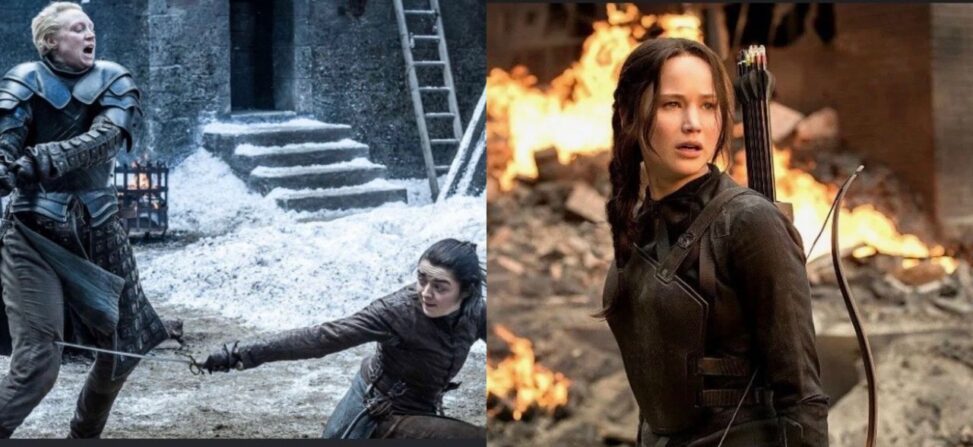The Evolving Center: From Margins to Mainstream in Media’s Strong Female Characters
The media’s depiction of characters undergoing a transition from the periphery of visibility to a central role is a dynamic process, often reflecting and shaping societal attitudes. One of the most potent examples of this evolution lies in the portrayal of the “strong female character.” Initially confined to the margins, often serving as plot devices or secondary figures, these characters have increasingly moved to the forefront of narratives. Their journey from stereotypical representations to more nuanced, complex individuals reveals significant shifts in our understanding of gender, power, and representation. This analysis will examine the transformation of the “strong female character,” comparing early, often stereotypical, portrayal with contemporary, more authentic depictions, drawing on scholarly insights to discuss their construction, societal impact, and the expectations they foster.
The evolution of the “strong female character” in media is a clear indicator of changing societal norms and expectations around gender roles. Early portrayals frequently defaulted to a narrow, often masculinized, version of strength, a phenomenon well-documented by scholars like Yvonne Tasker. Tasker, in her seminal work Action and Emotion: Female Action Heroes and the Culture of Nostalgia (2004), identifies the “action girl” trope. These characters, while physically capable and independent, often lacked emotional depth and narrative agency beyond their immediate combat or problem-solving roles. For instance, early iterations of Lara Croft in the Tomb Raider franchise exemplify this archetype. While undoubtedly a central figure, Croft’s strength was often framed through a lens of physical prowess and a certain sexualized independence, designed to appeal to predominantly male audience and fulfill fantasies of female empowerment without deeply exploring her internal life or motivations. Tasker argues that these characters were often “masculinized,” adopting traditionally male attributes as the primary means to achieve agency, thus reinforcing the notion that female strength had to mirror male strength to be considered valid. Croft’s character, while presented as powerful, often existed more as an object of admiration for her physical feats and aesthetic than aa a fully realized psychological entity.
In stark contrast, contemporary media showcases a richer tapestry of strong female characters, embodying emotional vulnerability, moral ambiguity, and a broader spectrum of skills and experiences. These modern heroines are not defined solely by their ability to overcome physical obstacles but by their complex inner lives, ethical considerations, and relational dynamics. A prime example, despite their controversial narrative conclusion, is Daenerys Targaryen from Game of Thrones. Initially introduced as a victimized younger sister, Daenerys undergoes a profound transformation into a formidable leader. Her journey, however, is fraught with difficult ethical choices, internal conflicts, and emotional turmoil. Scholar Carol Gilligan’s groundbreaking work, in a Difference of Voice: Psychological Theory and Women’s Development (1982), provides a framework for understanding this shift. Gilligan’s research highlighted that women often approach moral dilemmas and decision-making through a lens of care, responsibility, and interconnectedness, which differs from the justice-oriented, rights-based reasoning often associated with male characters. Contemporary complex heroines like Daenerys, while wielding power, also demonstrate the complexities of empathy, the weight of leadership decisions, and the impact of personal relationships on political action. This allows for a more authentic depiction of strength, one that integrates, rather than supplants, traditionally feminine traits and experiences.
The transformation of these media characters carries significant implications for real-life expectations and individual self-perception. The early stereotypes of the “action girl” could foster unrealistic ideals, potentially leading to pressure on women to suppress emotions or adopt aggressive personas to be seen as strong. This narrow definition of strength can be psychologically damaging, creating a sense of inadequacy for those who do not fit this mold. Conversely, the rise of complex heroines offers a more expansive and relatable representation of female power. As Steeves (2013) notes in Media and the Making of Modern Sex, media representations profoundly shape our understanding of gender roles and influence how individuals perceive themselves and others. By showcasing diverse forms of strength including emotional intelligence, resilience in the face of personal loss, and the capacity for complex moral reasoning; contemporary characters empower audiences to embrace their authentic selves. This fosters a healthier self-image, encouraging individuals to recognize and value a wider range of personal attributes as indicators of strength and capability, moving beyond narrow, often unattainable, archetypes.
The shift in media representation is not without societal ramifications. As these characters move from the margins to the center, they challenge deeply ingrained patriarchal structures and traditional gender roles. This can provoke societal charges, including backlash from audiences who are resistant to change or feel their established norms are being threatened. Such reactions can manifest in online criticism, fan movements attempting to “correct” narratives, or even a resurgence of older, more conservative portrayals. However, this pushback also highlights the increasing demand for diverse and authentic representation, suggesting that the evolution of strong female characters, while sometimes contentious, ultimately fosters a more inclusive representative media landscape.
Bibliography
Tasker Yvonne. Tasker, in her seminal work Action and Emotion: Female Action Heroes and the Culture of Nostalgia (2004), identifies the “action girl” trope.
Croft Lara: Tomb Raider franchise
Gilligan Carol: Difference of Voice; Psychological Theory and Women’s Development (1982),
Steeves (2013): Media and the Making of Modern Sex


Sheyanne McCauley
This analysis thoroughly investigates the evolution of female characters from the sidelines to the centre. The use of scholarly sources helps to identify terms, such as “action girl” and “strong female character,” to then compare them to the female characters looked at. It is explained well how the character Lara Croft was created to appeal to a certain audience while the character Daenerys Targaryen was made to appeal to a different one. These strong female characters have different depths to them, the character with the more depth being Daenerys Targaryen because of many reasons including her emotional capabilities and evolution from when her character was first introduced. The writer compares the two characters through how they are presented, their abilities, and their emotional depth; allowing for a well-rounded picture of who these characters are. Overall, this analysis does an excellent job at comparing these two female characters.
Although this analysis is very good, I don’t think the images properly illustrate what is being discussed. Going into reading this, I thought it would be comparing one of the Game of Thrones characters shown and Katniss Everdeen. I think it would be easier to tell what is being discussed at a glance if one of the images was of Lara Croft and the other was of Daenerys Targaryen.